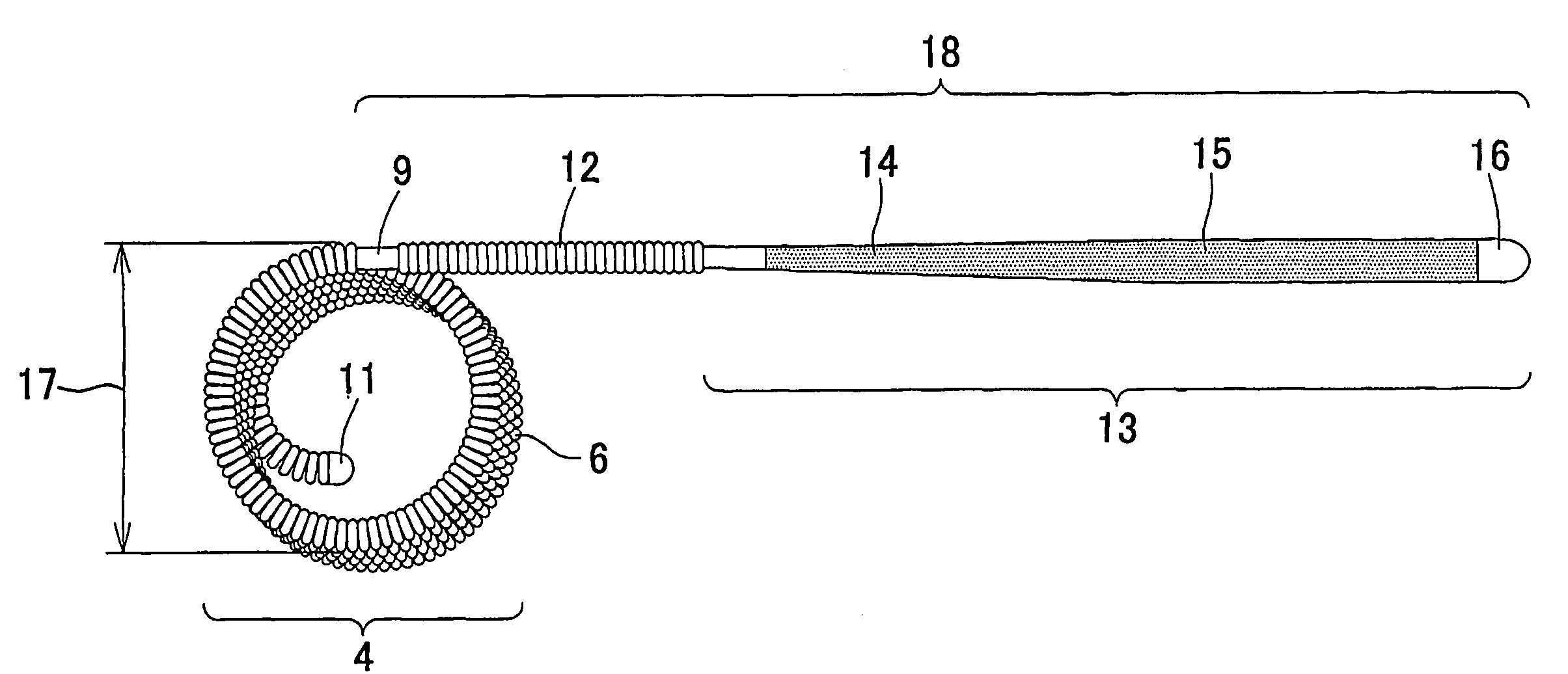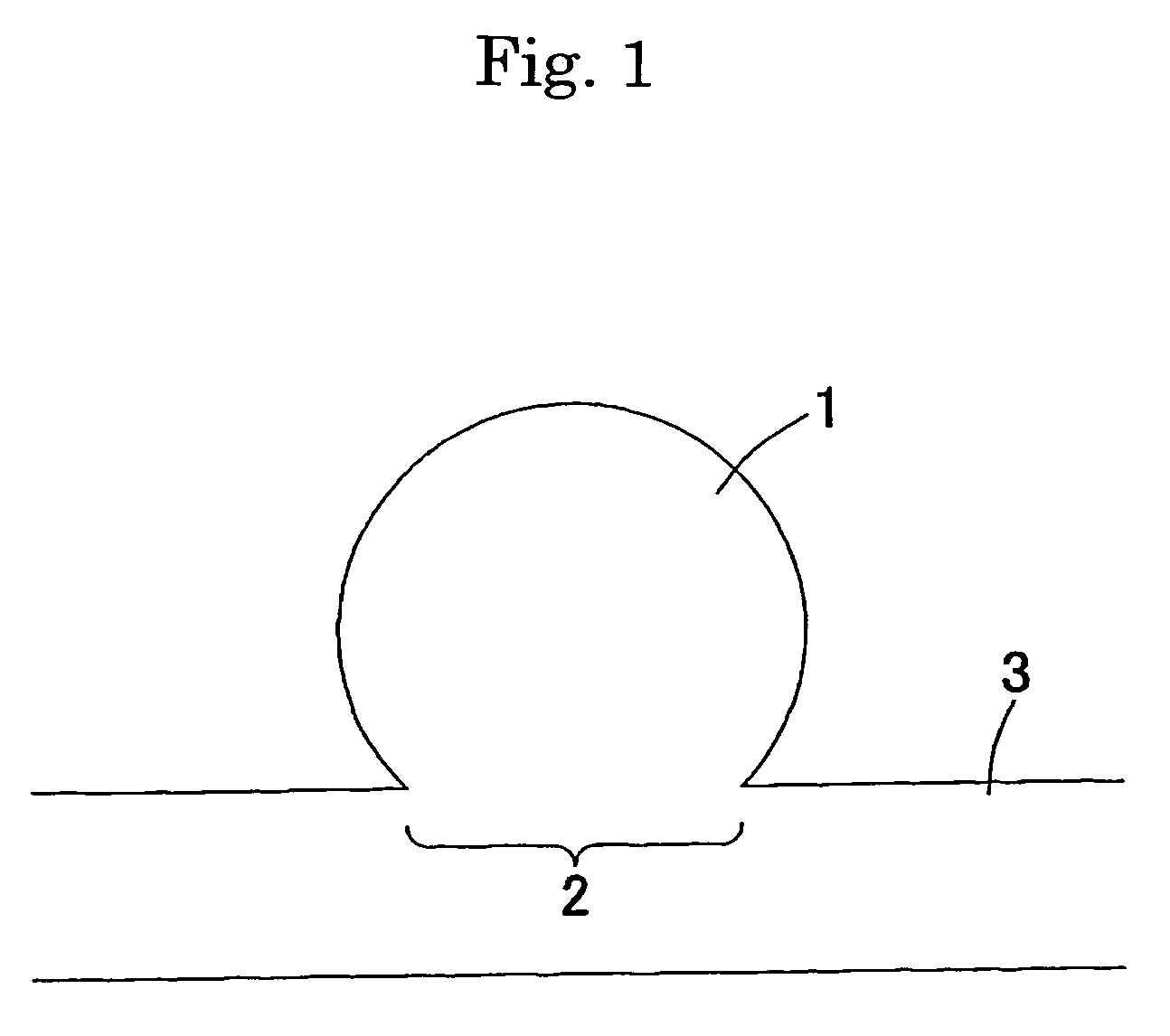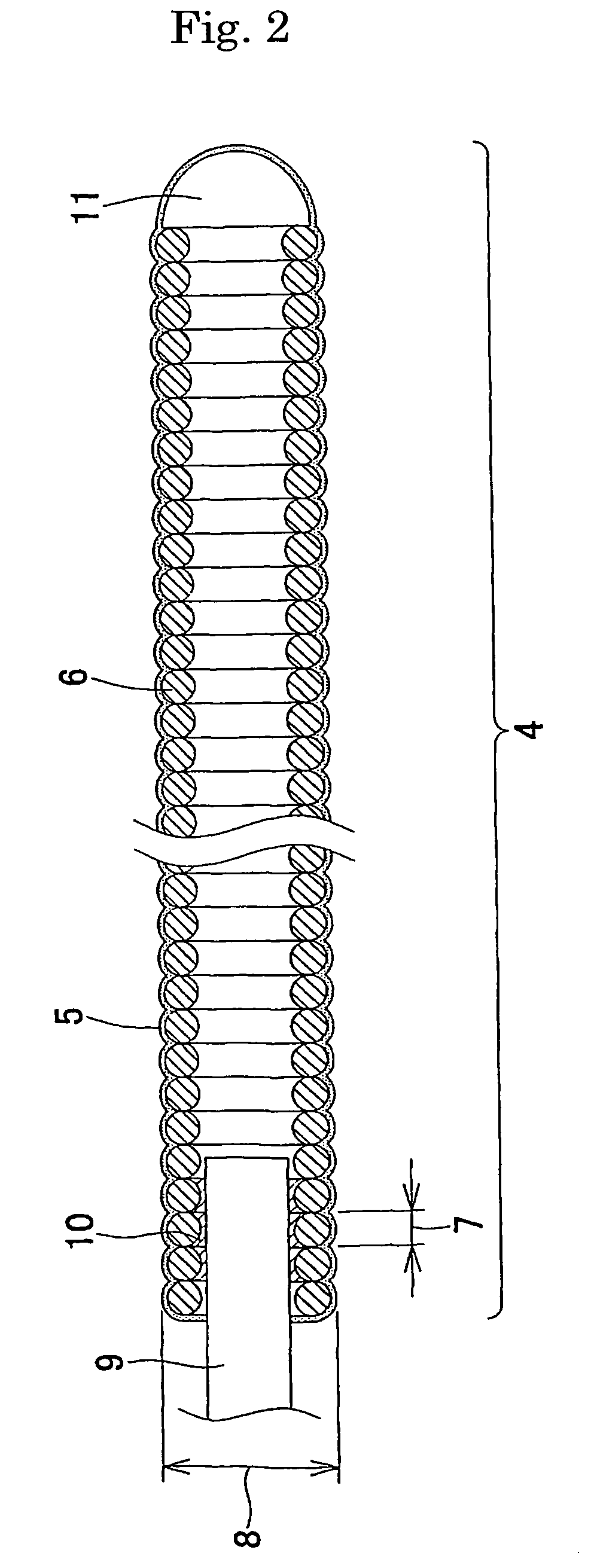Embolization device for vessel cavity in vivo
a technology of abolization device and a cavity, which is applied in the field of embolisation device, can solve the problems of infection, difficult to perform such a surgical procedure, and difficulty in performing such a clipping treatmen
- Summary
- Abstract
- Description
- Claims
- Application Information
AI Technical Summary
Benefits of technology
Problems solved by technology
Method used
Image
Examples
example 1
[0073] A platinum-tungsten (8%) alloy wire with a wire diameter of 45 μm was wound to form a coil with an outer diameter of 300 μm and a length of 4 mm. Using dimethylacetamide (manufactured by Nacalai Tesque, Inc.) as a solvent in which 5% lithium chloride (manufactured by Nacalai Tesque, Inc.) was dissolved; a 0.5% chitin (manufactured by Wako Pure Chemical Industries, Ltd.) solution was prepared. After the coil was dipped in the 0.5% chitin solution for one minute, the coil was dipped in 2-propanol (manufactured by Nacalai Tesque, Inc.) serving as a coagulant solution for 5 minutes to coagulate the chitin solution, and thereby the surface of the coil was coated with chitin. The solvent was removed by thorough washing with distilled water, followed by drying at 60° C. An embolization device coated with chitin was thereby obtained.
example 2
[0074] Using a 2% acetic acid (manufactured by Wako Pure Chemical Industries, Ltd.) aqueous solution as a solvent, a 2% Chitosan 1000 (manufactured by Wako Pure Chemical Industries, Ltd.) solution was prepared. An embolization device coated with chitosan was obtained as in Example 1 except that a 0.2 N sodium hydroxide (manufactured by Nacalai Tesque, Inc.) aqueous solution was used as a coagulant solution.
example 3
[0075] Using a 0.2 N sodium hydroxide (manufactured by Nacalai Tesque, Inc.) aqueous solution as a solvent, a 5% curdlan (manufactured by Wako Pure Chemical Industries, Ltd.) solution was prepared. An embolization device coated with curdlan was obtained as in Example 1 except that an aqueous solution containing 4% acetic acid (manufactured by Wako Pure Chemical Industries, Ltd.) and 26% sodium chloride was used as a coagulant solution.
PUM
| Property | Measurement | Unit |
|---|---|---|
| diameter | aaaaa | aaaaa |
| outer diameter | aaaaa | aaaaa |
| outer diameter | aaaaa | aaaaa |
Abstract
Description
Claims
Application Information
 Login to View More
Login to View More - R&D
- Intellectual Property
- Life Sciences
- Materials
- Tech Scout
- Unparalleled Data Quality
- Higher Quality Content
- 60% Fewer Hallucinations
Browse by: Latest US Patents, China's latest patents, Technical Efficacy Thesaurus, Application Domain, Technology Topic, Popular Technical Reports.
© 2025 PatSnap. All rights reserved.Legal|Privacy policy|Modern Slavery Act Transparency Statement|Sitemap|About US| Contact US: help@patsnap.com



